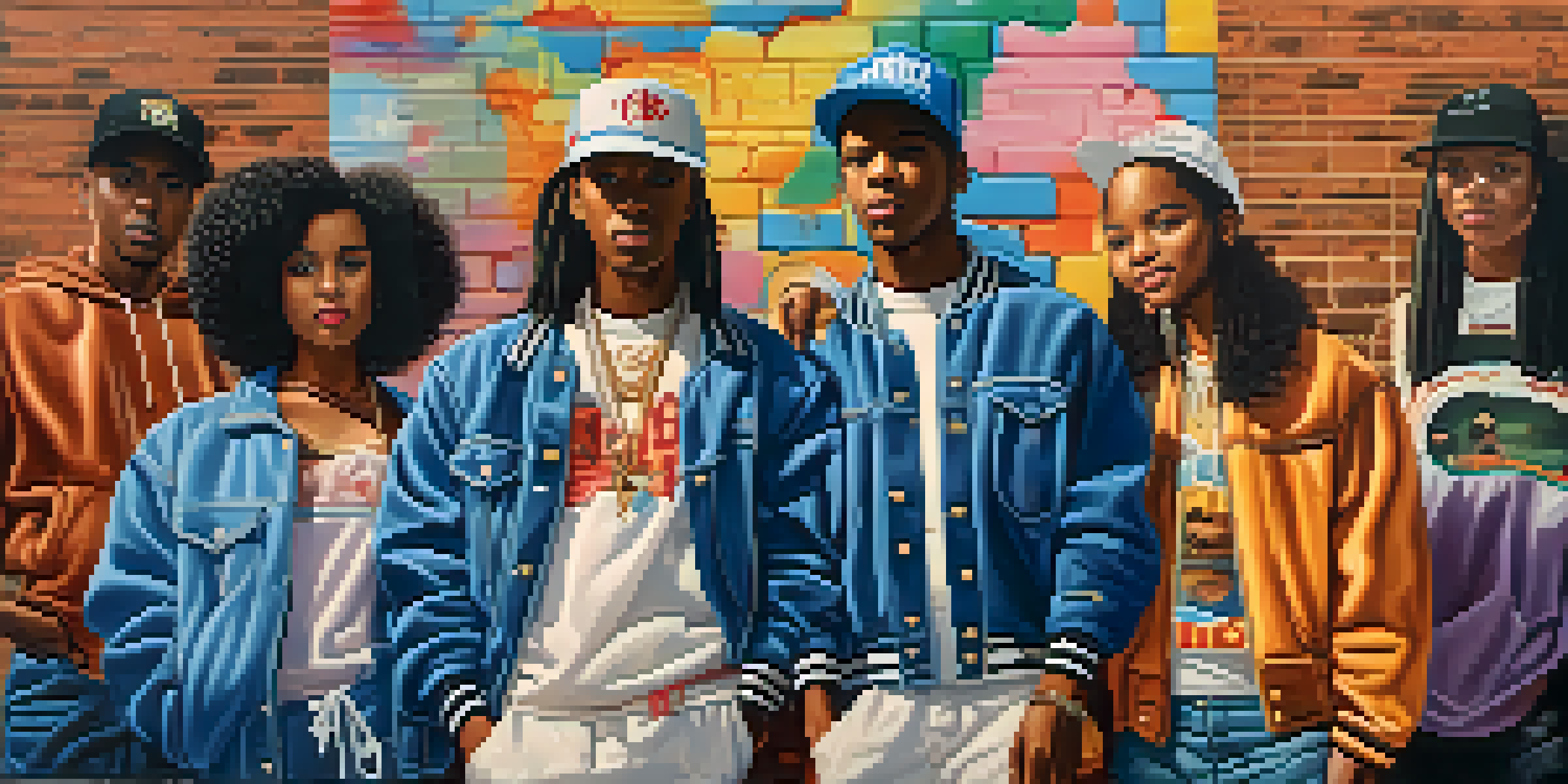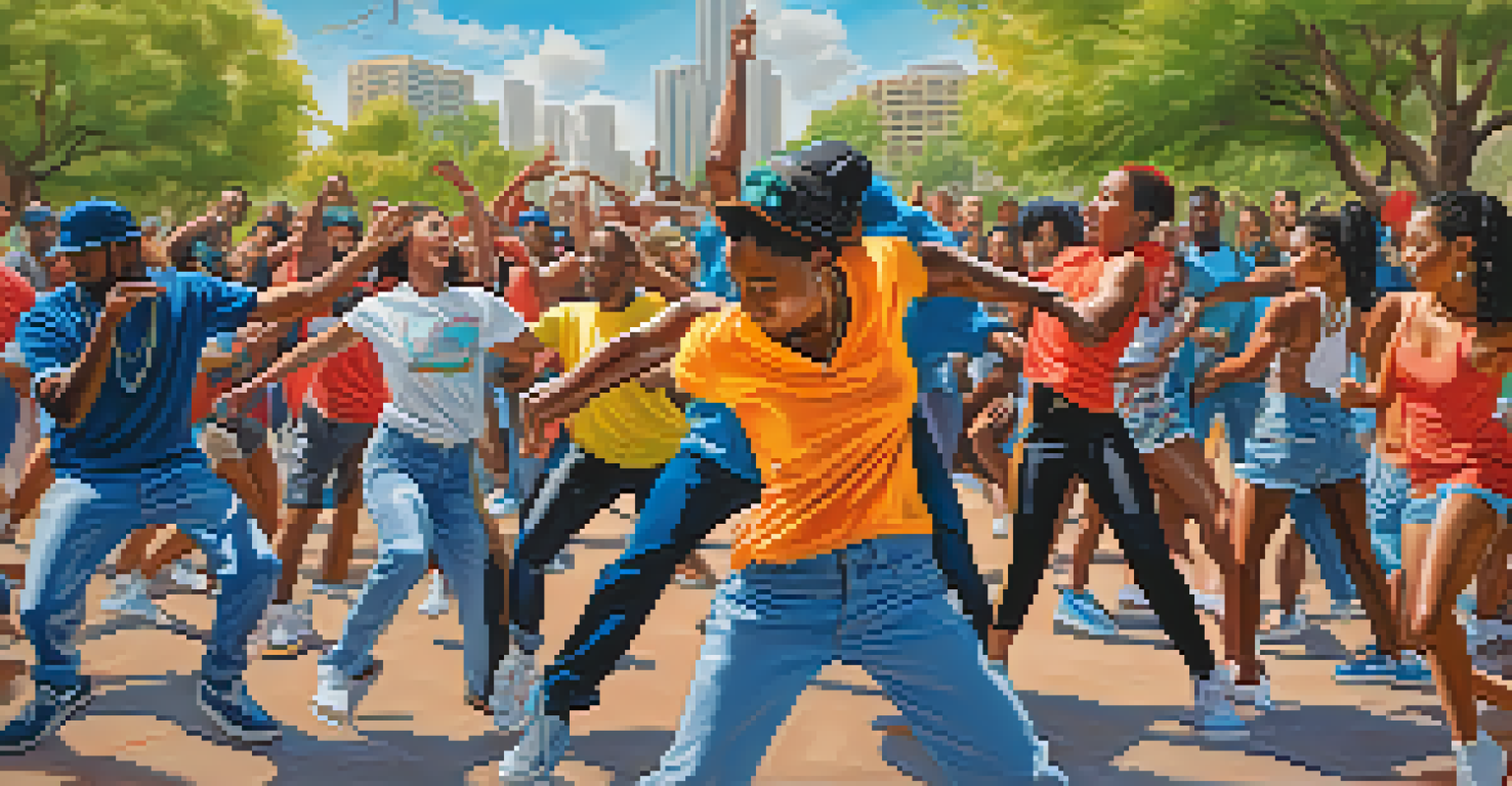Compton's Influence on West Coast Hip-Hop: A Historical View

The Roots of Hip-Hop: A Brief Overview
Hip-hop emerged in the 1970s in the Bronx, New York, as a vibrant cultural movement. It encompassed not just music but also art, dance, and fashion. As it gained popularity, its geographic influence began to spread, with cities like Compton soon becoming significant hubs.
I think the best thing about hip-hop is that it’s a reflection of life. It mimics the struggles and triumphs of the community.
In the early 1980s, Compton’s local scene began to develop its own unique sound and style. Young artists were inspired by the socio-economic challenges of their environment, leading to the creation of a raw and authentic form of expression. This laid the groundwork for what would become West Coast hip-hop.
The transition of hip-hop from the East Coast to the West Coast wasn't just about geography; it was about the narratives and experiences that artists wanted to share. Compton, with its rich cultural backdrop, became a focal point for this new wave of storytelling.
The Rise of Gangsta Rap in Compton
By the late 1980s, Compton was at the forefront of a new genre known as gangsta rap. Artists like N.W.A. took center stage, using their music to highlight the harsh realities of life in the streets. Their lyrics were unapologetic and often controversial, reflecting the struggles of their community.

N.W.A.'s 1988 album 'Straight Outta Compton' became a landmark release that not only defined gangsta rap but also put Compton on the global map. Their bold approach to addressing issues like police brutality and systemic racism resonated with many, sparking conversations that extended well beyond music.
Compton's Role in Hip-Hop Evolution
Compton has been a pivotal hub for hip-hop, shaping its sound and culture through influential artists and storytelling.
The popularity of gangsta rap led to a cultural shift, influencing not just music but also fashion, language, and lifestyle. Compton's identity became synonymous with the genre, shaping perceptions and inspiring countless artists who followed in their footsteps.
Key Artists Shaping Compton's Sound
Compton has birthed numerous influential artists who have left an indelible mark on hip-hop. Beyond N.W.A., figures like Dr. Dre, Kendrick Lamar, and The Game have each contributed to the evolution of the genre. Their unique styles and narratives reflect both personal experiences and the broader Compton community.
Gangsta rap was a way to express the way we felt about what was going on in our lives. It gave a voice to the voiceless.
Dr. Dre's transition from N.W.A. to a successful solo career and producer paved the way for the G-Funk era, characterized by smooth, funk-infused beats. This sound would dominate the West Coast hip-hop scene in the '90s and beyond, influencing artists across genres.
Kendrick Lamar, often hailed as one of the greatest rappers of his generation, brought a new level of lyricism and storytelling to the forefront. His work explores themes of identity, race, and social issues, continuing the legacy of Compton as a voice for the marginalized.
The Impact of Compton on Hip-Hop Culture
The influence of Compton extends beyond its local scene, significantly shaping hip-hop culture as a whole. The raw authenticity of its artists has inspired movements across the globe, encouraging others to share their stories through music. This cultural exchange has enriched the genre and expanded its reach.
Compton's unique blend of storytelling, social commentary, and innovative sound has become a template for aspiring artists. The city has shown that hip-hop can serve as a powerful platform for addressing societal issues, encouraging a sense of community and resilience.
Gangsta Rap's Powerful Impact
The emergence of gangsta rap in Compton, particularly through N.W.A., highlighted social issues and brought global attention to the genre.
Moreover, the visual aesthetics of Compton, from its street art to fashion, have influenced hip-hop culture at large. This artistic expression has become a crucial part of the hip-hop identity, merging music, art, and lifestyle into a cohesive narrative.
Compton's Role in the Mainstream
As West Coast hip-hop gained traction in the mainstream music industry, Compton remained at the center of this evolution. The success of artists from the area opened doors for many others, leading to greater recognition of the West Coast sound. This shift played a pivotal role in diversifying the music landscape.
Compton's influence can be seen in the collaborations that have emerged between artists from different regions. By merging styles and sounds, these collaborations have further enriched hip-hop, showcasing the city's ability to bridge gaps and foster creativity.
The mainstream success of Compton artists has also sparked interest in the city's culture and history, leading to documentaries and films that highlight its significance. This increased visibility has helped to reshape the narrative surrounding Compton, emphasizing its contributions to art and society.
The Legacy of Compton in Modern Hip-Hop
Today, Compton continues to be a beacon of creativity in the hip-hop world. New artists continually emerge, drawing inspiration from the pioneers who came before them. This ongoing legacy ensures that Compton remains relevant in the ever-evolving landscape of music.
Genres have expanded and blended, yet the core themes of struggle, resilience, and authenticity continue to resonate. Artists from Compton are not just creating music; they are telling stories that reflect the realities of their lives and communities, ensuring that these narratives are heard.
Challenges Fueling Artistic Resilience
Despite facing significant social challenges, Compton artists have used their experiences to inspire change and creativity within the hip-hop community.
The impact of Compton on modern hip-hop is undeniable, with its artists influencing trends, styles, and even the culture at large. As the city continues to evolve, so too does its role in shaping the future of hip-hop.
Challenges and Triumphs: Compton's Story
While Compton is celebrated for its contributions to hip-hop, it has also faced significant challenges. Issues like gang violence, poverty, and systemic inequality have shaped the narratives of its artists. Yet, these challenges have also fueled the creativity and resilience of the community.
Many artists use their platforms to address these issues, bringing awareness and driving conversations around social justice. This blend of art and activism showcases the power of hip-hop as a tool for change, with Compton artists leading the charge.

The triumphs of Compton's artists serve as a testament to the strength of the community. Their stories of overcoming adversity resonate with many, inspiring hope and illustrating the transformative power of music.